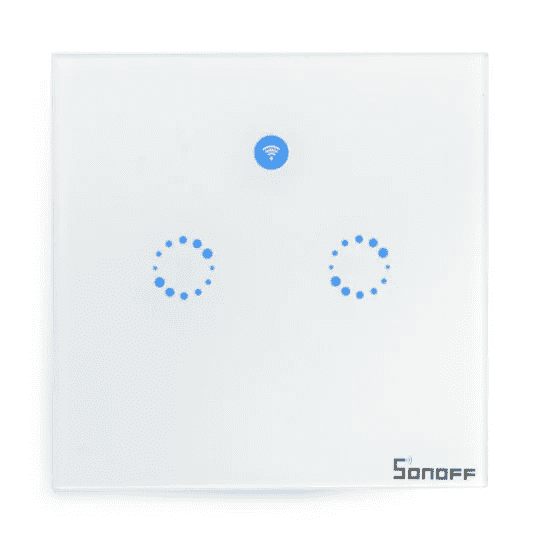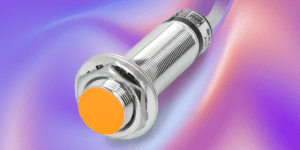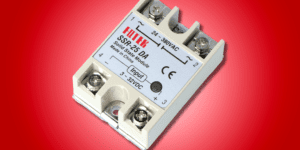Spis treści:
Smart home systems are the best companions to increase comfort and improve safety of the building. However, not everyone knows that an automated home is also an excellent way to minimise electricity consumption.
Why saving energy is so important?
Using electricity wisely helps improve household budgets, and not overloading the power system has a positive effect on its condition and lifespan. Saving electricity also has a huge impact on the environment – it’s enough to say that it helps to reduce pollutant emissions (e.g. carbon dioxide) associated with burning fossil fuels such as gas and coal. Thanks to smart home systems, pollution is reduced and the greenhouse effect is lessened.
And what if I have access to green energy already?
Even if you have access to wind power or photovoltaics at home, it is still worth reducing your electricity consumption. Although the electricity it generates is not itself a source of pollution or greenhouse gas emissions, most of this green energy is fed into the electricity grid, from where your home then receives it in the form of electricity from the power station – which is usually generated from coal or other fossil fuels – at least in most cases. Minimizing power usage is a great alternative during this presumably long wait – we mean, at least for now – for home energy saving batteries which are being developed.
Tools for energy saving in your smart home
Intelligent building systems can be equipped with many tools to help save electricity. They usually operate on a very simple principle – to “remember” to switch off installations and appliances when they are not in use, so the building uses less electricity without compromising dwellers or workers’ comfort. This means even bigger comfort for the enviroment – and that’s a matter that cannot be overestimated.
Smart sockets / intelligent sockets
Smart sockets come in two forms: flush-mounted, mounted in direct connection with the home’s electrical installation, or as smart plugs – devices that plug into typical sockets and resembling power adaptors. In both cases, these elements usually make it possible to remotely control the operation of household appliances or lighting connected to such socket. This option not only provides a higher level of safety, as it is possible to disconnect the power supply from virtually anywhere in the world, but also makes it easier to save electricity.
By using smart sockets and plugs, you no longer have to remember to switch appliances off each time you use them – you can do this by making the appropriate settings in the dedicated app. Many such appliances also allow you to control your electricity consumption more accurately thanks to features designed specifically for this purpose.
Light system
A smart, energy-efficient lighting installation usually consists of several components. The basis is of course energy-efficient light sources (in the vast majority of cases incandescent bulbs and lamps using light-emitting diodes), the use of which in itself can significantly reduce the amount of electricity consumed.
However, to ensure comprehensive operation and maximum optimisation of electricity consumption, additional elements are also used, such as:
- twilight sensors, which condition the activation of the lighting and its intensity depending on the amount of daylight reaching the interior of the house,
- motion detectors that allow the lights in rooms to be switched on and off depending on whether there are housemates inside,
- lighting controllers that can be used to switch lighting on and off and to manually or automatically control light intensity and colour.
By using smart sockets and plugs, you no longer have to remember to switch appliances off each time you use them – you can do this by making the appropriate settings in the app. Many appliances also allow you to control your electricity consumption more accurately thanks to features designed specifically for this purpose.
Media
Connecting media devices such as TVs and speakers to your smart home system allows you to control them remotely and make sure they remain switched off outside of the times you use them. This cuts down on electricity consumption and also makes it much easier to use such devices.
Heating
Proper heating system offers great potential for energy savings when connected to an intelligent building system. Interestingly, such benefits can be achieved not only with electric heating, but also with a gas or solid fuel.
Thermostat
A thermostat connected to a smart home system allows you to optimise the consumption of electricity and other utilities (such as gas) used to heat the building. This is because a suitable room controller makes it possible to keep the temperature as low as possible to maintain perfect thermal comfort for the occupants. Plus the connection to the smart home system makes it easy to control and adjust the settings on the fly.
The most efficient will be a zone system – the temperature in individual rooms is adjusted to the needs resulting from the characteristics of their use (for example, higher temperature in the bathroom, lower in the bedroom). Room controllers can cooperate with any type of heating – including central heating with a gas or solid fuel heater, as well as water or electric floor heating. With the right thermostat, heating installations that do not offer this option on their own can also be connected to the smart home system.
Thermostatic heads
If for some reason you do not want or cannot use a central thermostat, thermostatic heads placed on radiators in individual rooms can serve as the great substitutes. This way you can also separate heating zones in your house or flat. Such devices can be controlled remotely and maintain the set temperature in the zones, preventing the place from overheating.
Additional heating equipment
A smart home system will also work well if you use additional heating appliances such as electric heaters or infrared heaters. They don’t have to be adapted for use with such technology – you simply connect them to the mains via proper smart plugs or sockets.
Central energy management
Smart home systems with a central module that measures energy consumption are a great tool to help you save electricity. They are usually equipped with options that allow you to see what elements of the installation are most power-hungry, so you will know what to pay special attention to. In addition, many smart building systems come with special programmes to help you save energy.
Green energy with smart home systems
You can also connect your smart home to your photovoltaics system. This option makes it easier for you to control the settings of your panels and also allows you to optimise your energy consumption even further by keeping track of how much electricity you’re using.
How useful was this post?
Click on a star to rate it!
Average rating 0 / 5. Vote count: 0
No votes so far! Be the first to rate this post.












